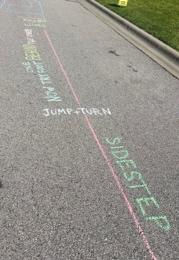Occupational Therapy for Parkinson’s Disease
- All Care Therapies

- Sep 22, 2019
- 1 min read

Parkinson’s disease (PD) is the second most common neurodegenerative disorder affecting about 1 million Americans. PD is characterized by a progressive decline in speed, flexibility, fluidity, and coordination of fine and gross motor function throughout the body, including extremities, trunk, face, and muscles of the voice.
How Can Occupational Therapy Help?
Suggest environmental modifications or cues to decrease falls and increase safety awareness in the individuals home (ex. remove rugs on the floor, use a night light, rearrange dishware placement in the kitchen, grab bars in the bathroom, etc.)
Provide safe exercises and ways to be physically active to improve motor function, postural stability, and balance
Help individuals learn modified ways of performing their daily activities if needed, such as dressing, toileting, self-feeding, writing, etc.
Collaborate with a physical therapist to decide the best option for mobility devices for safe transportation and functional transfers
Educate caregivers on proper body mechanics and techniques to safely and efficiently care for their loved one
Educate and provide caregivers with passive range of motion exercises to perform on their loved one to promote or maintain movement, and prevent bed sores
Reference:
Foster, E. R., Bedekar, M., & Tickle-Degnen, L. (2014). Systematic Review of the Effectiveness of Occupational Therapy-Related Interventions for People With Parkinson’s Disease. American Journal of Occupational Therapy, 68(1), 39–49. https://doi-org.prx usa.lirn.net/10.5014/ajot.2014.008706




Comments